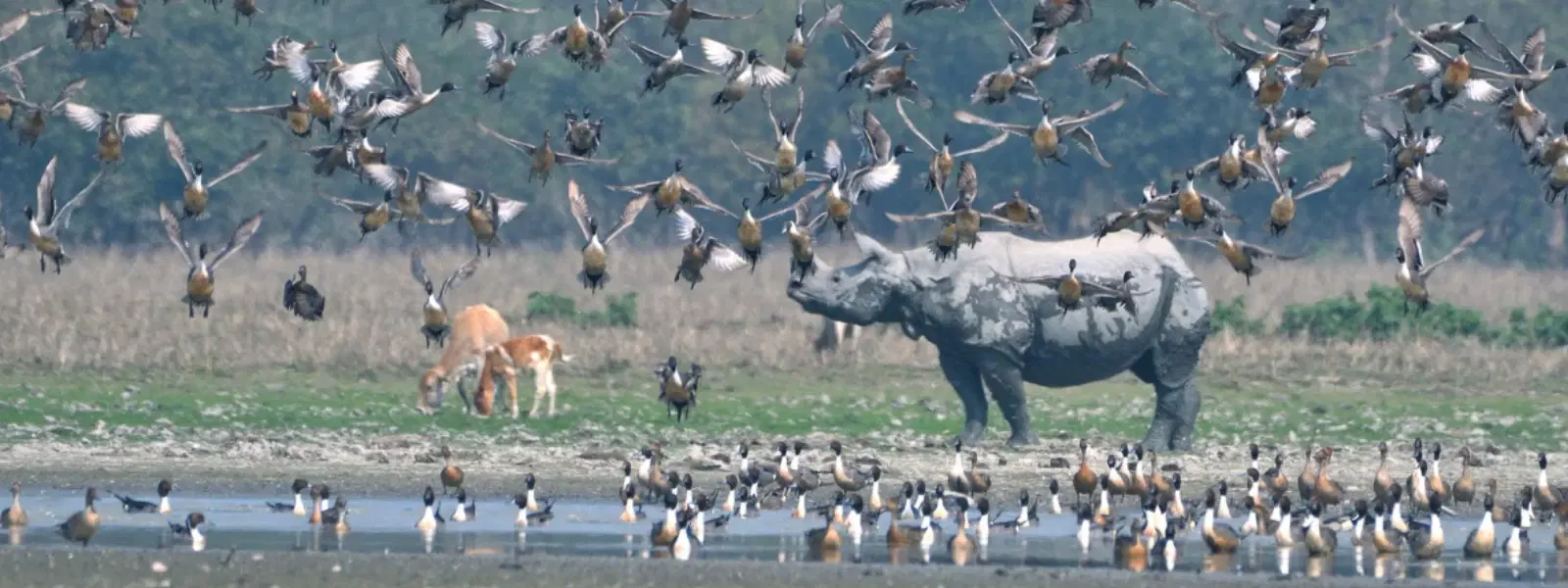
Hotels
•03 min read

India is a vibrant tapestry of natural wonders, and its bird sanctuaries are a true treasure trove for nature enthusiasts. These protected areas not only conserve a vast array of bird species, both native and migratory, but also provide idyllic settings for birdwatching, research, and ecological balance. In this blog post, we answer frequently asked questions about total bird sanctuaries in India, offering you a deep dive into their significance, locations, and unique characteristics.
Bird sanctuaries are specially protected areas designed to safeguard various species of birds and their habitats. These sanctuaries play a pivotal role in conservation and maintaining ecological balance by preserving natural habitats that are essential for breeding, feeding, and nesting. In India, protected bird areas are key to preserving the country’s rich and diverse avian population.
These sanctuaries are crucial not just from an ecological standpoint, but also culturally and economically. They serve as living laboratories for ornithologists, sanctuaries for migrating birds, and recreational spots for birdwatching enthusiasts. Moreover, they help in protecting endangered species and ensuring that the intricate food webs of our ecosystems remain undisturbed.
India proudly hosts over 70 bird sanctuaries, each offering a unique habitat for countless species of birds. These sanctuaries spread across various states offer a diverse blend of wetland, forest, and coastal ecosystems, ensuring that every bird lover finds a spot that resonates with their passion for nature.
The Bharatpur Bird Sanctuary, better known as Keoladeo National Park in Rajasthan, stands as the largest and most recognized bird sanctuary in India. On the contrary, the Thattekkad Bird Sanctuary in Kerala may be the smallest in area, yet it punches well above its weight thanks to its diverse bird population and unique ecosystem. Recently, newer sanctuaries have been established with the aim of protecting emerging habitats and lesser-known species, reinforcing India's commitment to biodiversity.

For those seeking immersive birdwatching experiences, India does not disappoint. Sanctuaries like Ranganathittu, Vedanthangal, and Chilka Lake offer a plethora of opportunities to witness an array of species in their natural glory. These centers are vibrant with colors, calls, and the mesmerizing flutter of wings, drawing visitors from around the globe.
A closer look at the map reveals that states such as Karnataka, Kerala, Rajasthan, and Gujarat are home to some of India’s most treasured bird sanctuaries. Each state brings its own unique ecological charm—ranging from the wetlands of Kerala to the arid landscapes of Rajasthan—making the list of bird sanctuaries in India as diverse as the country itself.
The winter months, specifically from November to February, mark the peak season for migratory bird visits. Sanctuaries such as Nal Sarovar and Pulicat Lake come alive during these months, with a spectacular influx of migratory birds adding a vibrant touch to the landscape. This seasonal phenomenon enhances both the visual appeal and the ecological significance of these sanctuaries.
India has been commendably proactive in the conservation of migratory bird habitats. Numerous initiatives, backed by both national and international collaborations, work tirelessly to protect and nurture these avian havens. Strategic policies and partnerships underscore the growing global focus on preserving the ecological corridors critical to migratory bird species.
Despite their significance, bird sanctuaries in India face several challenges. Habitat loss, pollution, and human encroachment pose serious threats, while climate change continues to affect bird migration patterns and breeding cycles. These pressures require concerted efforts to ensure the sustainability of these natural havens.
Efforts to safeguard these vital ecosystems include government-led initiatives, active community involvement, and the promotion of eco-tourism. Various organizations and research institutions are working tirelessly to devise sustainable solutions that protect both the migratory and resident bird populations. The integration of conservation with economic and social benefits underscores the broader importance of these protected areas.

Insight Corner: Did You Know? India hosts over 1,300 bird species, making it one of the most biodiverse regions for avian life. Bird sanctuaries like Bharatpur and Ranganathittu are vital not just for conservation but also for educating the public about the importance of ecological balance.
There are over 70 bird sanctuaries across India, each protecting unique bird species and habitats.
The Bharatpur Bird Sanctuary (Keoladeo National Park) in Rajasthan is the largest and most famous bird sanctuary in India.
The Thattekkad Bird Sanctuary in Kerala is considered the smallest but is rich in bird diversity.
Karnataka has the highest number of bird sanctuaries in India, showcasing rich avian biodiversity.
The best time to visit is during the winter months (November to February) when migratory birds flock to India.
Bird sanctuaries in India are more than just conservation zones—they are living, breathing ecosystems that contribute significantly to the health of our environment. By exploring these protected areas, you not only witness nature's splendor but also support the ongoing efforts to maintain delicate ecological balances. Whether you're a seasoned birdwatcher or a curious traveler, the diverse sanctuaries across India offer endless opportunities for exploration and learning about our planet's rich biodiversity.